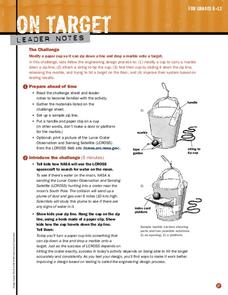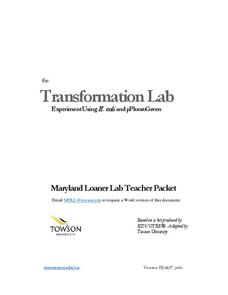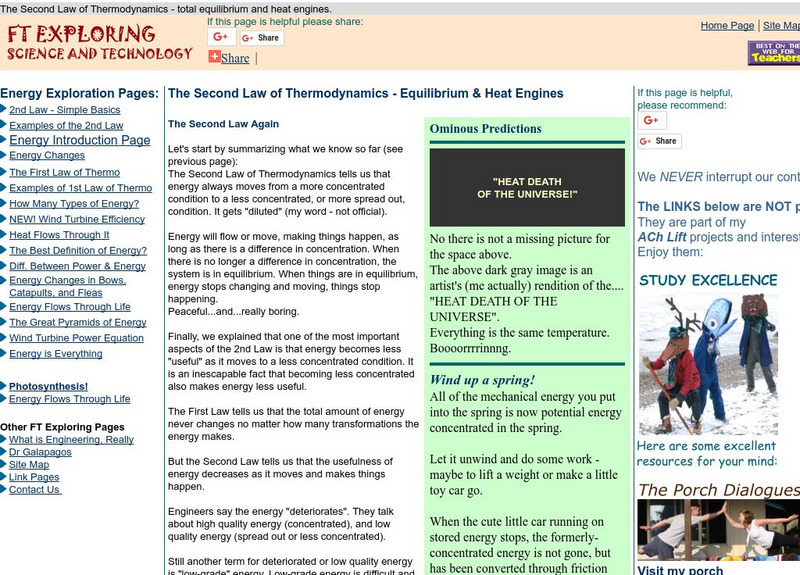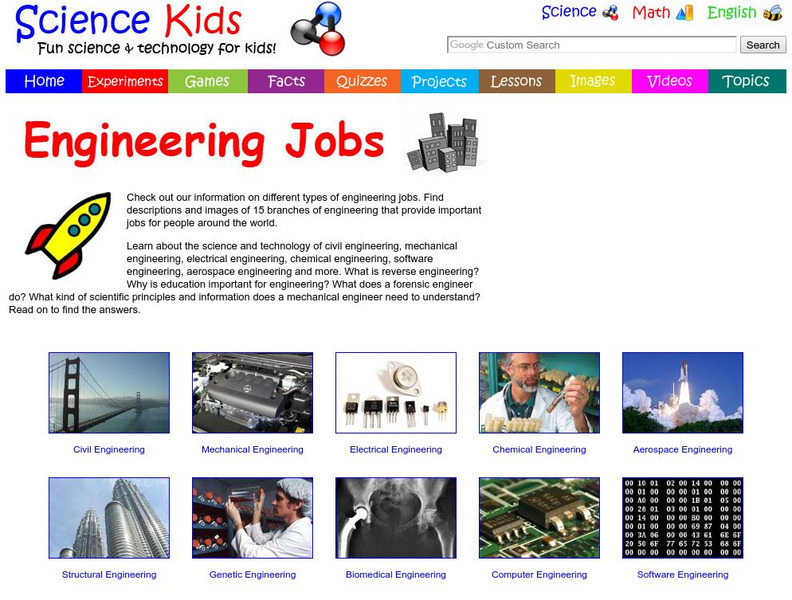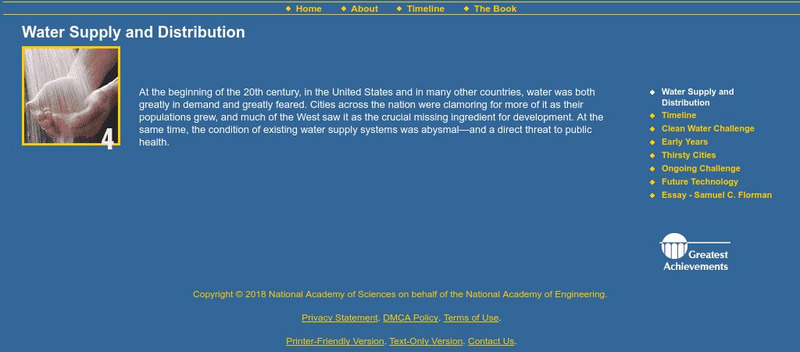Tech Museum of Innovation
Engineering Takes Flight
Groups explore concepts of flight by creating paper airplanes from different types of paper and testing their flight. They use the results to identify the optimal material.
TryEngineering
Search Engines
Learn how to find things quickly and efficiently on the Internet. The lesson teaches how search engines work and how to efficiently use them. It includes an activity where groups develop search queries to find sites using given criteria.
PBS
Hands-On Engineering Challenges to Bolster Your Electricity, Sound, and Force Units
Need some activities to go along with your unit? A collection of hands-on activities from PBS offers opportunities to add to your electricity, sound, and force units. The electricity activities revolve around building a...
Deliberating in a Democracy
Cloning
High schoolers explore the issues and challenges of cloning. For this cloning lesson plan, students read about how cloning affects people and the types of cloning, then they prepare a debate either for or against cloning.
TryEngineering
Program Your Own Game
Young computer scientists get to see what it's like to be a software engineer as they use free online software to design a computer game. They play and evaluate games groups created to round out the activity.
Teach Engineering
The Temperature Effect
How temperature affects the efficiency of a solar panel is the focus of the third in a series of eight resources that presents how engineers are able to control the temperatures of photovoltaic panels. Class members find out how the...
Towson University
Mystery Tubes
How do scientists know they're right? Truth be told, they don't always know. Explore the scientific process using mystery tubes in an insightful activity. Young scientists discover how to approach and solve problems in science, how ideas...
TryEngineering
Arduino Blink Challenge
Who knew turning a light on and off could be so complicated? In the lesson, pupils use Arduino boards to learn about computer codes and programs. They program an Arduino to make a light turn on and off at certain time intervals.
Teach Engineering
Quantum Dots and the Harkess Method
The Fantastic Voyage is becoming close to reality. The class reads an article on the use of nanotechnology in the medical field and participate in a discussion about what they read. The discussion method helps class members become more...
NASA
On Target
NASA's LCROSS mission is dropping a probe into a lunar crater. Groups design a system to travel down a zip line and drop a marble onto a target in the classroom. The groups then modify their designs based upon testing.
Towson University
Transformation Lab
Transform your class' understanding of genes and antibiotic resistance with the Transformation Lab. Junior geneticists create and observe their own resistant strains of E. coli through research, discussion, and experimentation. The...
Teach Engineering
Where Are the Plastics Near Me? (Mapping the Data)
The last activity in a nine-part series has teams create a Google Earth map using the data they collected during a field trip. Using the map, groups analyze the results and make adjustments to the map to reflect their analysis. A short...
Will Steger Foundation
The Carbon Cycle - What are its Implications for Climate Policy?
The carbon cycle isn't a bike which produces carbon and this lesson explains why. Through reading and discussion, groups of pupils create visual explanations of the four parts of the carbon dioxide oxygen cycle. Activities...
TryEngineering
Give Binary a Try!
Digital, analog, and now binary clocks? The lesson teaches individuals how to interpret binary code. They use an online software program to read binary clocks.
Learn Engineering
Learn Engineering: Diesel Engine vs. Petrol Engine
This video and article explore the differences and the similarities between petrol and diesel engines. The article discusses all topics found in the video. [4:06]
Learn Engineering
Learn Engineering: Understanding Degrees of Freedom
Explores how to predict degrees of freedom of a mechanism. Understand that in mechanics degrees of freedom is one of the most important concepts. Video length: 4 min. 41 sec.
FT Exploring
Ft Exploring: The Second Law of Thermodynamics Equilibrium & Heat Engines
Use this illustrated guide to understand equilibrium and heat engines as they relate to the second law of thermodynamics.
Learn Engineering
Learn Engineering: Theory of Vibration
Did you know that some bridges have failed due to the effect of vibration? This article and video explore vibration and its importance in the design of civil structures and mechanical equipment. The article discusses all concepts covered...
National Academy of Engineering
Greatest Engineering Achievements of the Twentieth Century: Nuclear Technologies
Students learn about nuclear technologies in the 20th century. Some topics explored are splitting the atom, the Manhattan Project, and power plants. The resource includes historical information, a timeline, and a personal essay by a key...
Science for Kids
Science Kids: Science Facts: Engineering Jobs
This site explores different types of engineering jobs. Discover 15 branches of engineering within this site.
Science for Kids
Science Kids: Engineering Facts: Tunnel Facts
Learn more about the Lincoln Tunnel, Channel Tunnel, and Cu Chi Tunnels on this website. This site exploring facts about tunnels.
National Academy of Engineering
Greatest Engineering Achievements of the 20th Century: Lasers & Fiber Optics
Learners investigate lasers and fiber optics in the 20th century. Some topics explored are working lasers, optical fiber, and the gossamer web. The resource includes historical information, a timeline, and a personal essay by a key...
National Academy of Engineering
Greatest Engineering Achievements of the 20th Century: Spacecraft
Students learn about spacecraft in the 20th century. Some topics investigated are Apollo, after Sputnik, and exploring galaxies. The resource consists of historical information, a timeline, and a personal essay by a key innovator.
National Academy of Engineering
Greatest Engineering Achievements: Water Supply & Distribution
Learners explore the water supply and distribution in the 20th century. Some topics investigated are waterborne diseases, Aswan High Dam, and reverse osmosis. The resource consists of historical information, a timeline, and a personal...









